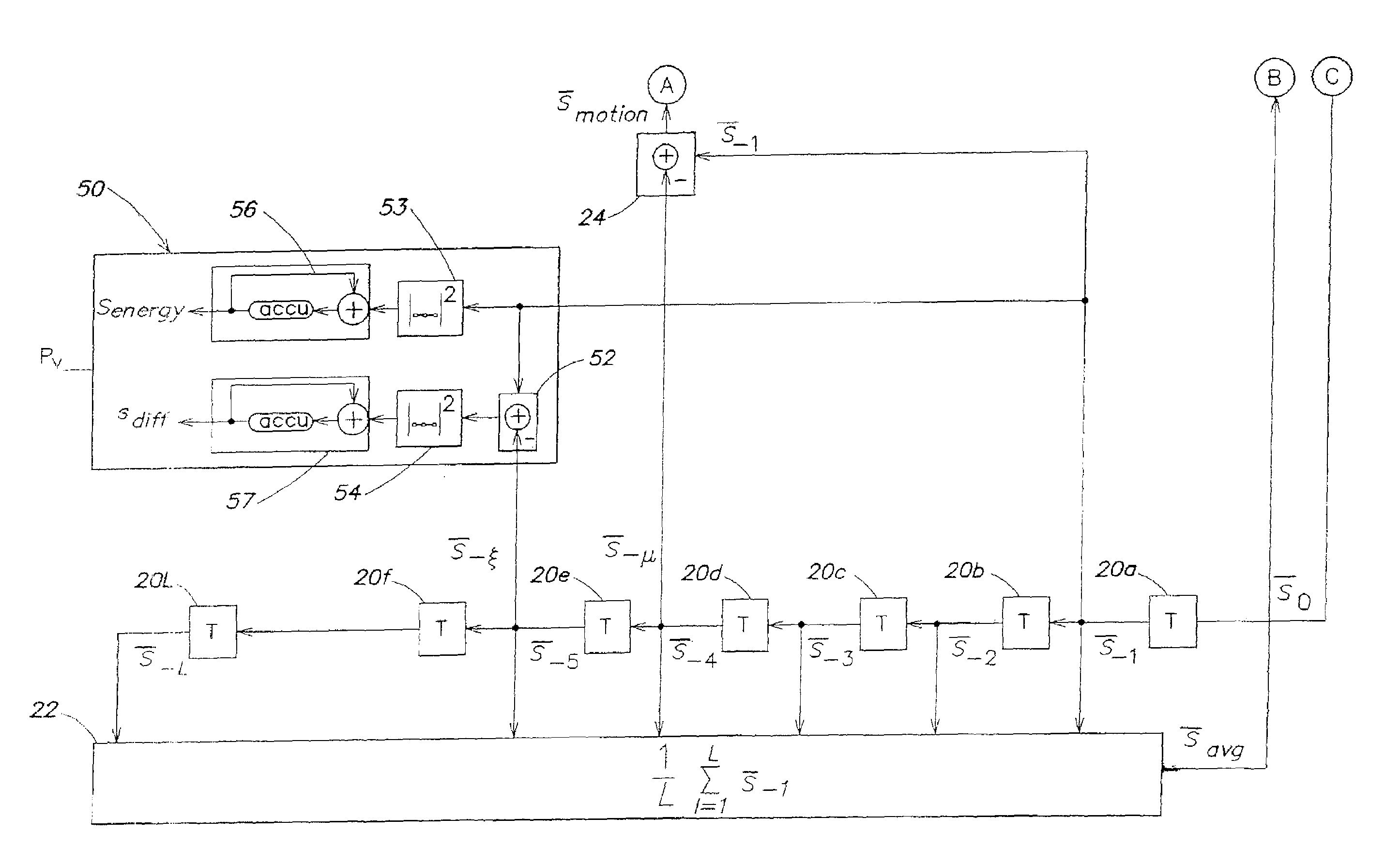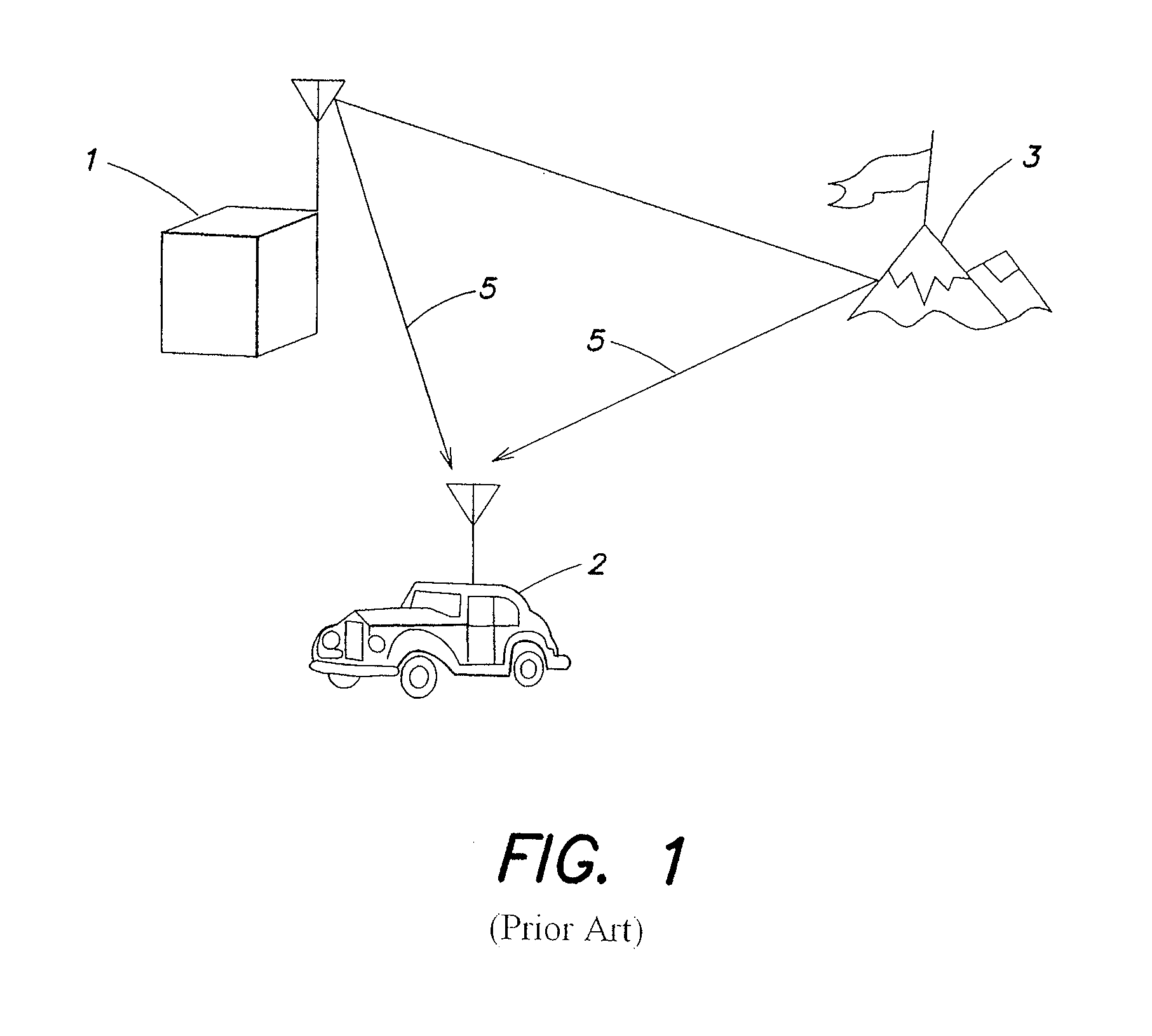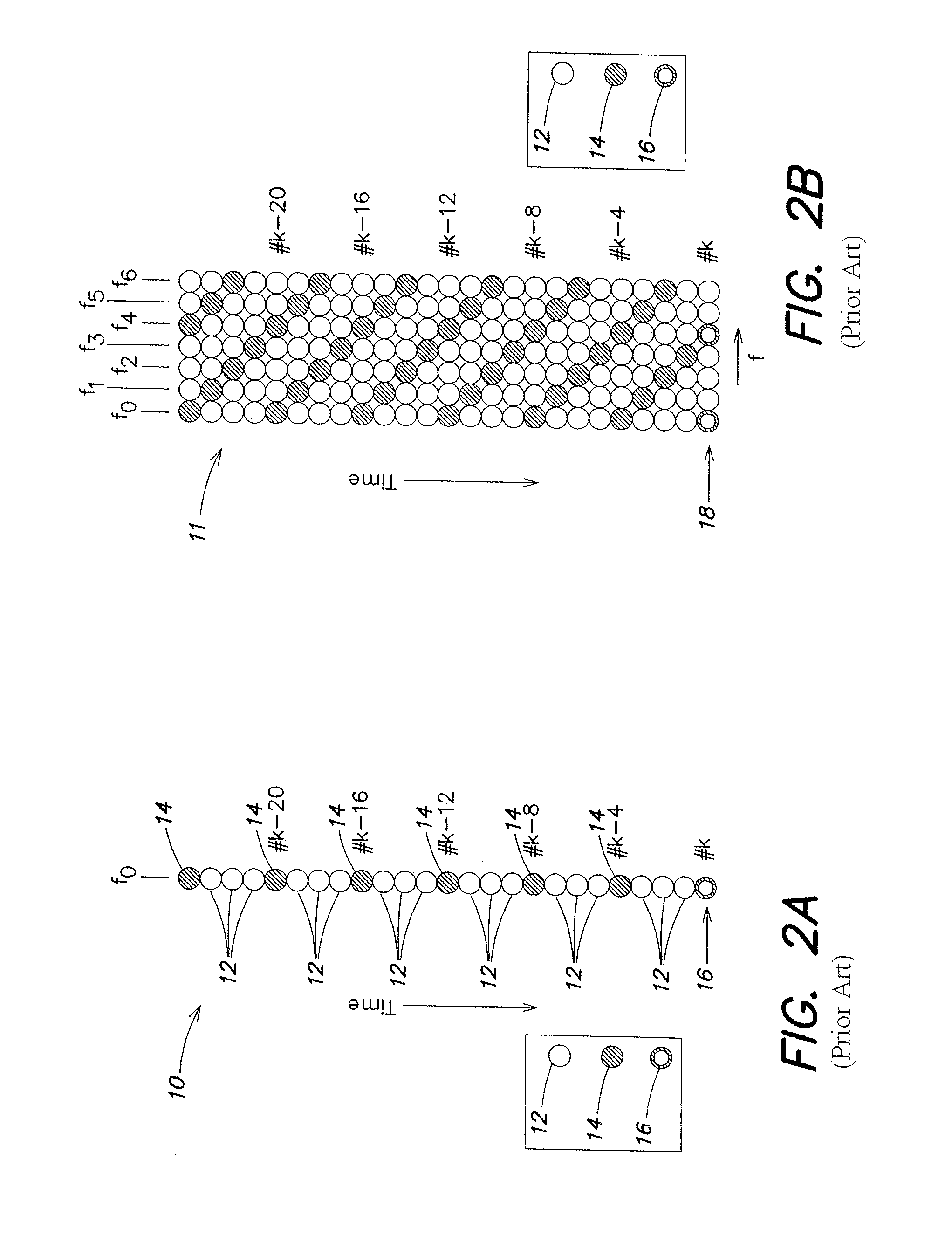Method and device for motion-compensated noise evaluation in mobile wireless transmission systems
a mobile wireless and noise evaluation technology, applied in the field of motion compensation noise evaluation in mobile wireless transmission systems, can solve the problems of affecting the reconstruction of the data signal at the receiver end, affecting and evaluating the transfer function, so as to achieve the reconstruction of the original data signal and improve the quality of the data signal reconstructed at the receiving end.
- Summary
- Abstract
- Description
- Claims
- Application Information
AI Technical Summary
Benefits of technology
Problems solved by technology
Method used
Image
Examples
Embodiment Construction
[0019]FIG. 1 is pictorial illustration of a mobile wireless transmission system. A data signal transmitted by the transmitter 1 goes via various pathways forming the transmission channel 5 to the receiver 2, often being partially reflected by obstacles 3.
[0020]FIG. 2A illustrates a data signal 10 with a single carrier frequency f0, in which reference symbols 14, 16 have been introduced at equal-time intervals between information symbols 12. As indicated by the serial index k, reference symbols 14, 16 occur each time after three information symbols 12. The new reference symbol 16 currently received bears the serial index k, so that reference symbols with an index value less than k have already been received in a receiver and have possibly been saved there.
[0021]FIG. 2B illustrates an OFDM data signal 11 with multicarrier transmission. Here, a plurality of carrier frequencies f0, f1, f2, f3, f4, f5, f6 are used with a fixed frequency interval, each of them carrying data signals. On ea...
PUM
 Login to View More
Login to View More Abstract
Description
Claims
Application Information
 Login to View More
Login to View More - R&D
- Intellectual Property
- Life Sciences
- Materials
- Tech Scout
- Unparalleled Data Quality
- Higher Quality Content
- 60% Fewer Hallucinations
Browse by: Latest US Patents, China's latest patents, Technical Efficacy Thesaurus, Application Domain, Technology Topic, Popular Technical Reports.
© 2025 PatSnap. All rights reserved.Legal|Privacy policy|Modern Slavery Act Transparency Statement|Sitemap|About US| Contact US: help@patsnap.com



